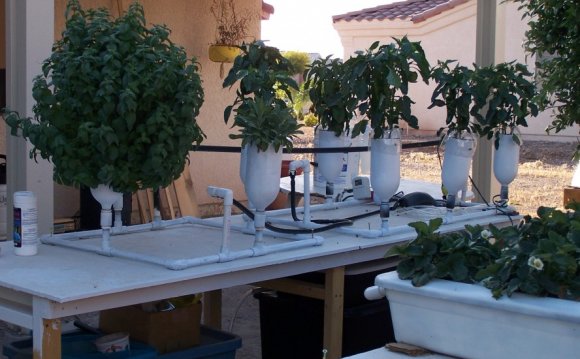

(Originally published in American Nurseryman, Jan. 1996. Photos by Larry Weaner unless indicated otherwise. Republished in Connecticut Horticultural Society Newsletter, February 2010.)
The elements that make a landscape design “natural” are difficult to define. A landscape with curved bed lines, informal plant arrangements and no pyramidal yews does not always qualify as a natural landscape. And advocates of natural design are not necessarily eager to banish a host of beautiful exotics from the plant palettes of American landscape designers, replacing the plants with a motley crew of straggly natives.
The basic concept behind natural design, however, is fairly simple—to incorporate native plant communities into the designed landscape. But their successful incorporation requires a basic understanding of how native plants operate in nature.
Too often, random informality passes for “natural, ” when in reality nature is highly ordered and anything but random. Understanding this order and using it in our designs is the key to making natural design workable and successful. This does not mean, however, that we must design exclusively with native plants, attempt to copy nature exactly, or exclude the influences of other design styles. The goal is to create a framework for the overall designed landscape that has an aesthetic and ecological relationship to our indigenous landscape through the use of native plants in their natural associations.
The goal is to create a framework for the overall designed landscape that has an aesthetic and ecological relationship to our indigenous landscape through the use of native plants in their natural associations.
The basic considerations of natural design can be broken down into three categories: aesthetic, managerial and environmental.
The aesthetic aspect of our designs is highly subjective, and individual style varies greatly. Some designers may object to uniformly patterning their work on the native landscape, feeling they are homogenizing their designs or stifling their artistic expression. But, as landscape designers, our medium is the land.
Unlike a painter whose art occupies an isolated canvas, our work visually interacts with the surrounding landscape, both natural and constructed. We therefore have a responsibility to contribute continuity and a sense of place to the larger landscape. To successfully accomplish a marriage of art and nature, we should sometimes put our egos aside and let nature be our guide.
 The managerial aspect of natural design is tied to the fact that reducing landscape maintenance is a strong priority for virtually all our clients. Natural design techniques can make a great contribution in this regard. This does not mean that natural landscapes are maintenance-free and can be completely left to natural processes with no human guidance, however.
The managerial aspect of natural design is tied to the fact that reducing landscape maintenance is a strong priority for virtually all our clients. Natural design techniques can make a great contribution in this regard. This does not mean that natural landscapes are maintenance-free and can be completely left to natural processes with no human guidance, however.
Photo © Rob Cardillo
What natural design does mean is that landscapes that incorporate native plants and natural processes will require less time, money and energy for upkeep than designs in which plants are selected and combined for ornamental effect alone. A purely ornamental garden is like a beautiful, sleek automobile with no engine. It may be nice to look at, but the only direction it will go without help is downhill. We will be perpetually required to tow these gardens up the hill with fertilizers, watering hoses and weeding forks.
The environmental considerations of natural design are equally important. Many detrimental landscape practices can be minimized or eliminated. Such landscape practices include the excessive use of pesticides, herbicides, inorganic fertilizers, fossil fuels burned while mowing large areas of turf grass, and exotic species that have aggressively naturalized in the wild.
 Natural design aims not only to reduce these negative effects, but to make a positive contribution to the surrounding environment as well. Naturally designed landscapes can also become functioning ecosystems capable of providing food and shelter for animals and insects, while helping to perpetuate many native plants whose habitats are being reduced through development.
Natural design aims not only to reduce these negative effects, but to make a positive contribution to the surrounding environment as well. Naturally designed landscapes can also become functioning ecosystems capable of providing food and shelter for animals and insects, while helping to perpetuate many native plants whose habitats are being reduced through development.
Now that I’ve covered these main categories, I’d like to discuss 10 elements of natural design and examples of how to apply them to our work.
1. Cultivate in your clients an appreciation of the beauty in nature.
Everyone admires the beauty in a majestic mountain range or a towering waterfall, but most of what we can create in our landscapes is more subtle. The contrasting patterns of straight and leaning tree trunks in a woodland grove, a single turk’s cap lily (Lilium superbum) nodding above a bed of meadow grass, or the layered branches of a pagoda dogwood (Cornus alternifolia) in a woodland edge may be an acquired taste.
A native old field in winter is a prime example of how learning to see the landscape anew can open a whole new vista of aesthetic possibilities. The glistening orange of little bluestem (Schizachyrium scoparium) in the sun, punctuated with columnar green patches of eastern red cedar (Juniperus virginiana) is a spectacular American scene, and a much more warming sight on a frigid February morning than a curled up ‘PJM’ rhododendron (Rhododendron ‘PJM’) in a crispy bed of pachysandra (Pachysandra terminalis). Designers who cultivate in their clients an appreciation of the natural world around them will find their work to be more easily accepted.




YOU MIGHT ALSO LIKE












